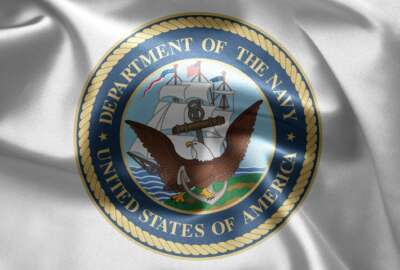
Navy starts giving waivers to enlisted sailors who want to serve more than 30 years
The Navy is letting some enlisted sailors stay longer if they accept difficult-to-fill assignments.
Military officers will see some of the biggest changes to the promotion system in years due to provisions in the 2019 defense authorization act. But enlisted Navy sailors can expect new developments as well.
The Navy is trying to fill some of its less popular sea duty billets by waiving the limitations on how many years senior enlisted sailors can serve, according to a message to the fleet Vice Adm. Robert Burke, the chief of Naval Personnel.
The program offers high year tenure waivers to chiefs, senior chiefs and chief petty officers willing to go out to sea. The waivers allow those sailors to serve more than the maximum 24, 26 or 30 years for those respective ranks.
“We need sailors who are personally engaged in the success of our Navy as well as their own personal success,” Burke stated in the memo. “Similarly, we need leaders who encourage and enable this. This initiative to provide increased opportunity for our senior enlisted leaders to stay Navy will help us maintain the leadership experience and technical acumen we need at sea as we grow the force. It also allows our senior enlisted leaders to continue to perform and compete for advancement.”
The new program isn’t the only way the Navy is trying to keep some of its older sailors in the force.
Earlier this year, the Navy announced its targeted reentry program.
The program gives golden and silver tickets to sailors leaving the military. The golden ticket allows sailors to return to active duty within a year of their release. Silver ticket holders will get two years to decide if they want a streamlined path back into active duty.
“The program is designed to take folks that are top performers in the Navy. We tried to talk them into staying, they made up their mind, we respect their decision. They’re going to leave, but we’ve earmarked them, they were top performers, if they change their mind within one year or two years of their decision they’ve got a fast track to come back in,” Burke told Federal News Radio in March.
That program goes after petty officer third class to petty officer first class enlisted ranks who attained community qualifications, demonstrated superior performance in fitness reports and passed their most recent fitness assignment.
The Navy plans to grow by about 21,000 in the next five years, so it will be pushed to recruit and retain its members as it expands.
Read more of the DoD Personnel Notebook
Copyright © 2025 Federal News Network. All rights reserved. This website is not intended for users located within the European Economic Area.
Scott Maucione is a defense reporter for Federal News Network and reports on human capital, workforce and the Defense Department at-large.
Follow @smaucioneWFED




